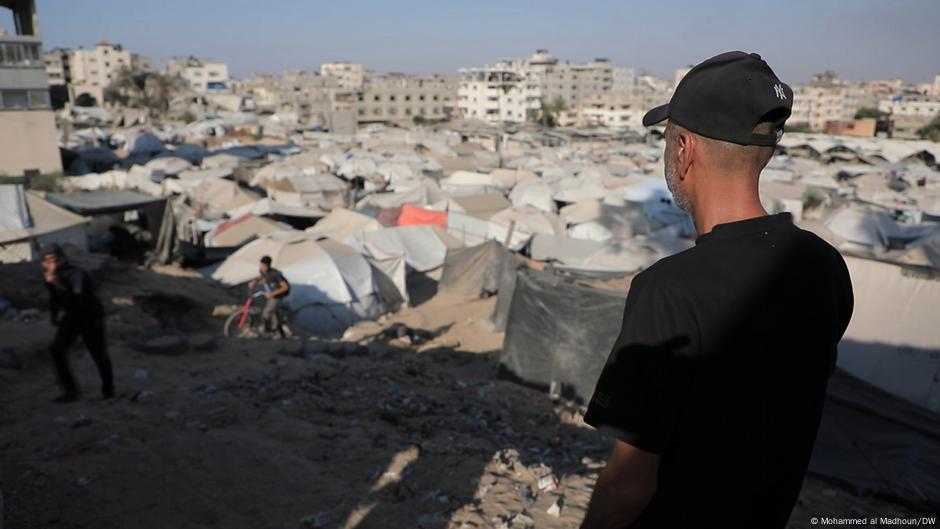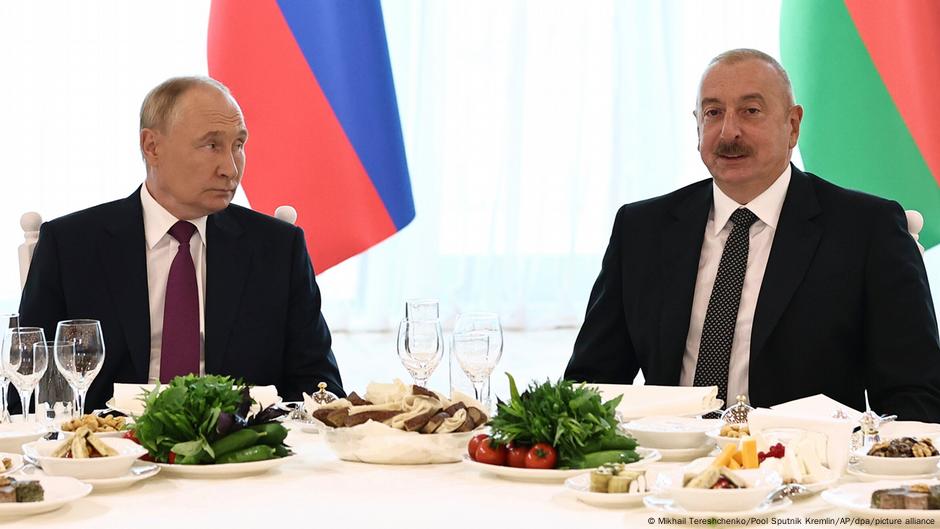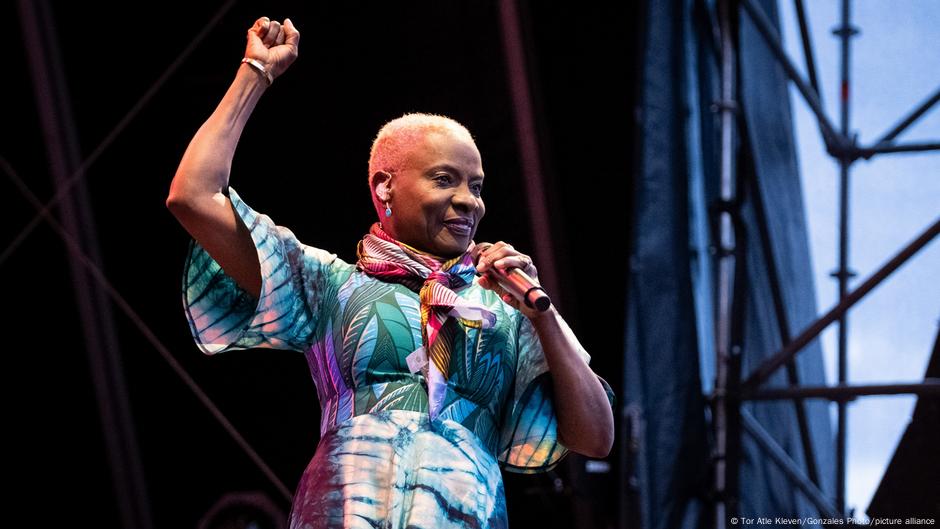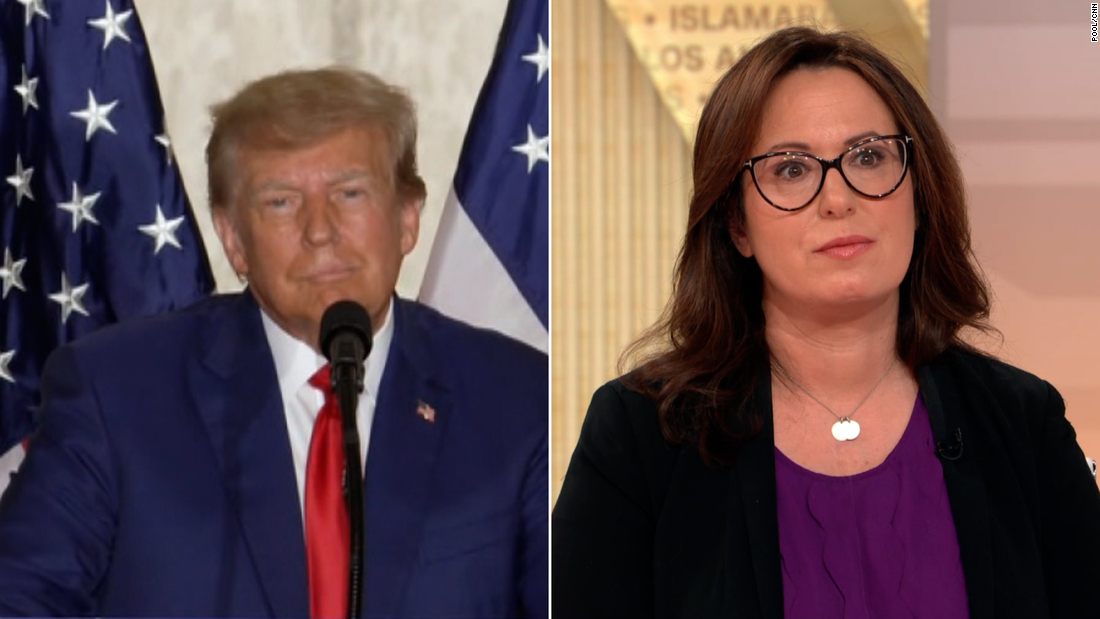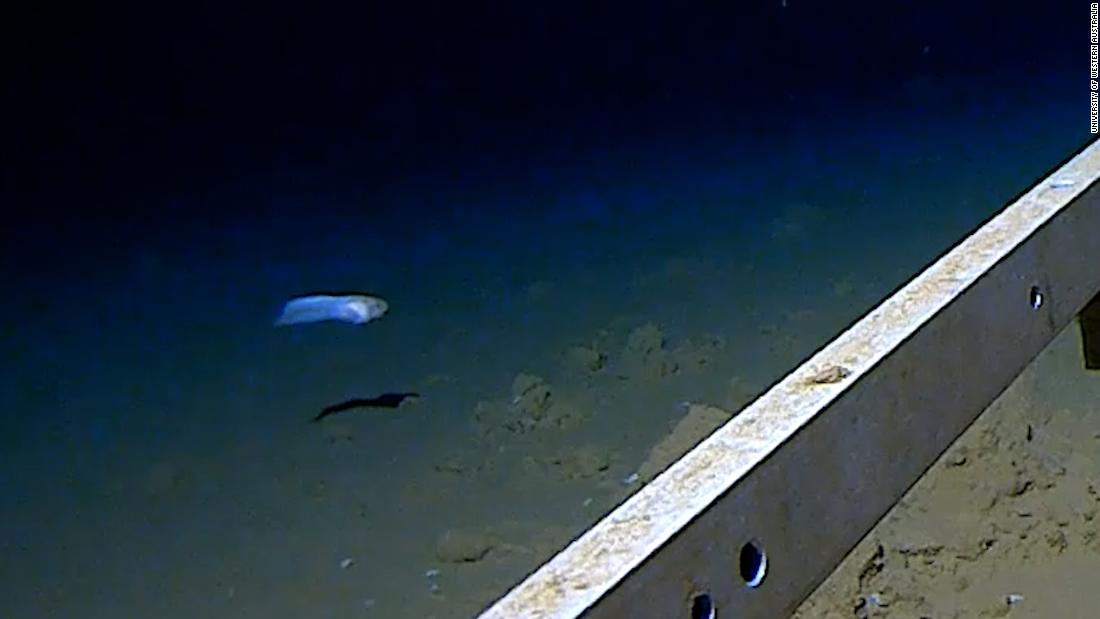ConflictsPalestinian Territories
Trying to get aid in Gaza: Killed while lining up for food
Tania Krämer | Hazem Balousha in Gaza07/03/2025July 3, 2025
With hundreds of civilians shot and killed near aid distribution centers in Gaza in recent weeks, allegations mount over Israeli military tactics.
https://p.dw.com/p/4wrnkMahmoud Qassem, Khader’s father (above), said his son "hadn’t even begun to live his life."Image: Mohammed al Madhoun/DW
A little over a week ago, Mahmoud Qassem lost his son, Khader. The 19-year-old had been trying to reach a food distribution center run by the US-backed Gaza Humanitarian Foundation (GHF) in central Gaza.
“The last time his mother and I heard from him was at 11 p.m. that night. He told me he was in a safe place — he had gone to the Netzarim distribution center — and I told him to take care,” Qassem told DW from a tent in Gaza City, where the family has been displaced.
“At 1 a.m., I tried calling him again, but his phone wasn’t receiving calls. I started to feel anxious. There was no word the whole time, and I waited until 2 p.m. on Friday. I felt like a fire was burning inside me,” said the 50-year-old.
On Friday, Qassem went to central Gaza and checked the hospitals until he discovered that Khader had been killed. When the body was eventually recovered, after coordination with the Israeli military, it showed that his son had died from several gunshot wounds.
“A 19-year-old boy who hadn’t even begun to live his life, all for fetching a box,” he said, barely holding back tears. He added that he hadn’t wanted Khader to go, but his son had felt that he needed to provide for his family.
“The situation here is beyond description. People are sacrificing themselves to make it. Only God knows what we are going through. No one feels for us — not Hamas, not Israel, not the Arab countries, not anyone.”
Gaza family mourns 19-year-old killed at Israeli aid site
To view this video please enable JavaScript, and consider upgrading to a web browser that supports HTML5 video
Food, other supplies extremely scarce in Gaza
Almost daily reports of violence, injuries and killings tied to food and aid distribution highlight the unbearable reality facing Gaza’s 2.3 million residents, who have become almost completely dependent on supplies entering through the crossings with Israel. Nearly the entire population has been displaced, and around 57,000 Gazans, many of them women and children, have been killed in Israeli attacks since October 2023, according to the Palestinian Ministry of Health. An analysis in May found that 93% of the remaining population is experiencing acute food insecurity.
Food and other supplies are extremely scarce in Gaza, even with the resumption of aid deliveries by the UN and new distribution centers — three of which are currently open — run by the GHF, a US-Israeli organization, after an almost three-month Israeli blockade.
Israeli officials justified the blockade by claiming that Hamas is stealing aid and using it to finance its operations. This claim has been rejected by the UN and other international and local aid groups, which have had a well-established network and distribution mechanism in Gaza for many years.
But aid trucks have repeatedly been looted, either by armed gangs or by ordinary people desperately trying to get hold of food. Meanwhile, the Israeli army has intensified its airstrikes, issuing widespread evacuation orders for large parts of northern and southern Gaza.
Saeed Abu Libda, a 44 year-old father of five, recently managed to pick up one sack of flour when a truck passed by near Khan Younis. “I know it was risky but we need to eat,” he told DW by phone, since foreign journalists are not allowed in Gaza.
Abu Libda said there were thousands of people waiting for the trucks, when suddenly he heard two shells being fired. “I saw people on the ground, some were injured, some were cut to pieces. I was injured by a shrapnel in my abdomen, but luckily it was a light injury.”
Palestinians collect aid supplies from the US-backed Gaza Humanitarian FoundationImage: Hatem Khaled/REUTERS
Hundreds killed near food distribution sites in recent weeks
The Health Ministry in Hamas-ruled Gaza has put the number of people killed in recent weeks by Israeli airstrikes, shootings and bombardments at more than 500. Most of these victims were waiting at food distribution sites or trucks carrying aid, or nearby, health officials said.
The Israeli Foreign Ministry dismissed these claims in a post shared on X on Tuesday, and accused Hamas of firing on civilians. It claimed that testimonies from Gaza residents showed that Hamas “spreads false claims blaming the IDF, inflates casualty numbers, and circulates fake footage.”
On Tuesday, about 130 of the world’s largest charities and NGOs, including Oxfam and Save the Children, urged that the GHF be shut down. They said the foundation forced thousands of starving people into militarized zones, where they faced gunfire while trying to access lifesaving aid.
GHF’s chairman Johnnie Moore stated on Wednesday during a press conference in Brussels that GHF would not cease operations. He said the foundation had delivered more than 55 million meals to date and was willing to work with the UN and other aid agencies. He added that the Gazan health ministry “every single day issues a statistic of civilian casualties and simultaneously attributes 100% of those civilian casualties to waiting for aid — virtually every time, waiting for our aid.”
Vezi mai multe știri aici
The Israel Defense Forces (IDF) has on multiple occasions stated that it has fired “warning shots” at individuals approaching military positions near aid distribution sites. It has not released any information on casualty numbers.
But on June 27, left-leaning Israeli newspaper Haaretz published an article alleging Israeli soldiers had been given the green light to open fire on crowds near food distribution sites, in order to keep them away from Israeli positions within the militarized zones.
Unnamed soldiers interviewed in the article said they had used lethal force against unarmed individuals who posed no threat. Haaretz also reported that the military was investigating whether these actions breached international law and constituted potential war crimes.
In a joint statement, Israeli Prime Minister Benjamin Netanyahu and Defense Minister Israel Katz swiftly dismissed the article, accusing the newspaper of “malicious falsehoods designed to defame the IDF, the most moral military in the world.”
The IDF also rejected the accusations, saying in a statement carried by Israeli media that no forces had been ordered “to deliberately shoot at civilians, including those approaching the distribution centers.”
But three days later, on Monday, the Israeli military said that in light of “lessons learned,” the IDF had decided to reorganize access roads and aid centers, establish new checkpoints and warning signals to “reduce friction with the population and to maintain safety of troops operating on the ground.”
The Gaza Humanitarian Foundation has repeatedly claimed that there has been no violence at its sites, instead accusing foreign media outlets of not reporting the truth. “We have not had a single violent incident at our distribution sites. We haven’t had a violent incident in close proximity to our distribution sites,” Moore said.
Following the allegations raised in Haaretz, however, the GHF said these were “too grave to ignore” and called for an investigation.
Dozens of people killed at aid distribution center in Gaza
To view this video please enable JavaScript, and consider upgrading to a web browser that supports HTML5 video
‘We receive just enough to keep us alive’
Meanwhile, desperate Palestinians often have to walk for hours through war-torn terrain to reach distribution centers located in Israeli-declared military zones. These centers are usually open for only a short time, and it’s often unclear where people can safely gather and wait for hours.
“The road there is very dangerous, and I try hard not to deviate from the main road to get there,” Ahmed Abu Raida told DW by phone from in Mawasi in southern Gaza, where he now lives in a tent with his extended family. “We wait for the announcement to open the centers, and during the long hours of waiting, there is heavy gunfire from several directions.”
Food, critical aid supplies only trickling into Gaza
To view this video please enable JavaScript, and consider upgrading to a web browser that supports HTML5 video
Abu Raida said he went to a GHF site in Rafah several times, and managed to get a prepackaged box containing flour, lentils, pasta, tea, cooking oil. “When we enter the place, there is great chaos due to the large number of people,” he said, calling the distribution process random. “There is no inspection or limit to the number of boxes one can take.”
Like the other people interviewed for this article, Abu Raida felt that in general, the process was humiliating and unfair. Elderly people, women or those needing help don’t stand a chance. “What can we do? We don’t have enough food or income to buy from the markets where prices are insanely high,” he said. “So all we receive is just enough to keep us alive.”
Edited by: Martin Kuebler
Tania Krämer DW correspondent, author and reporter, based in Jerusalem.Send us your feedback
Sursa: DW


